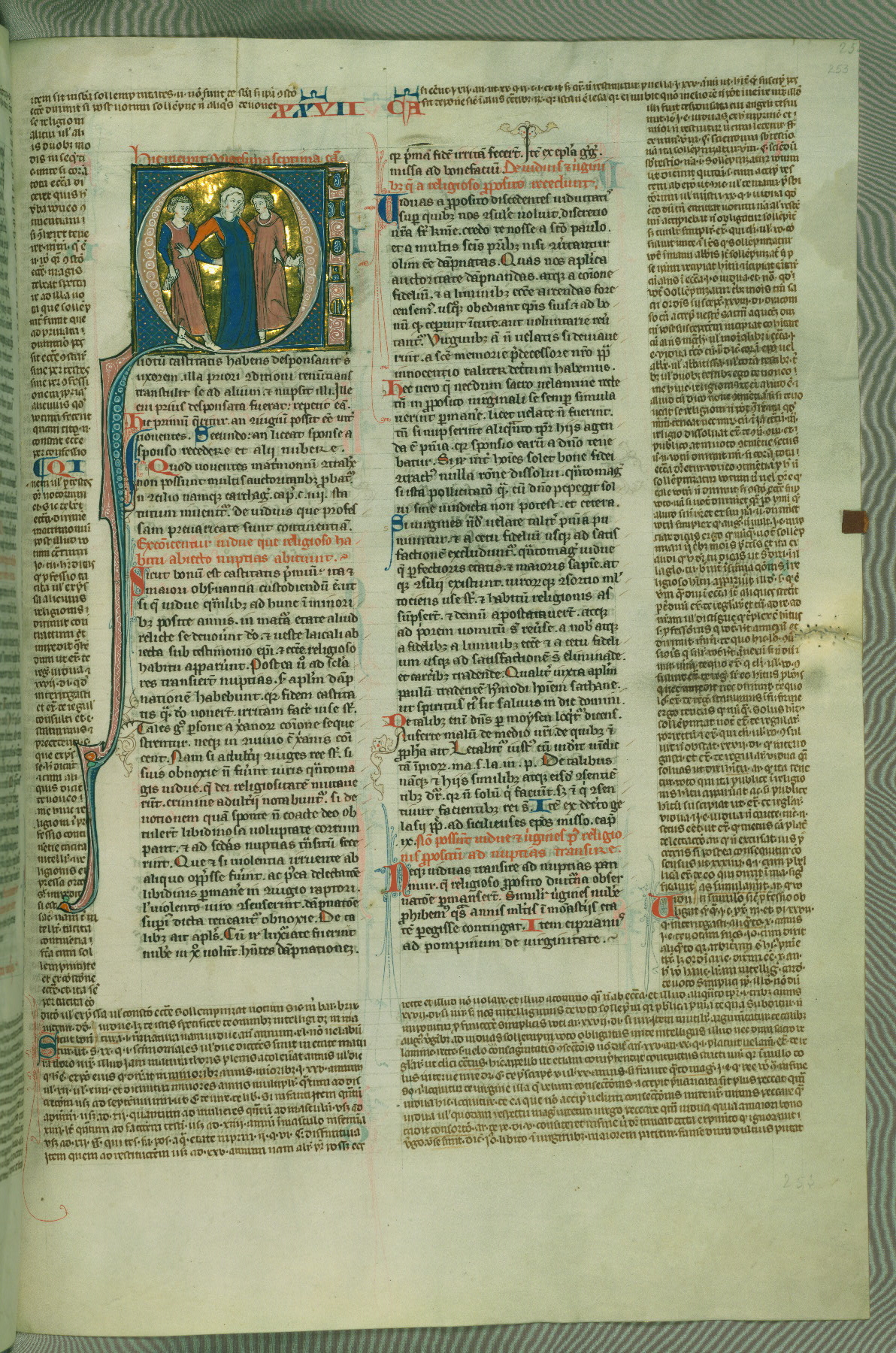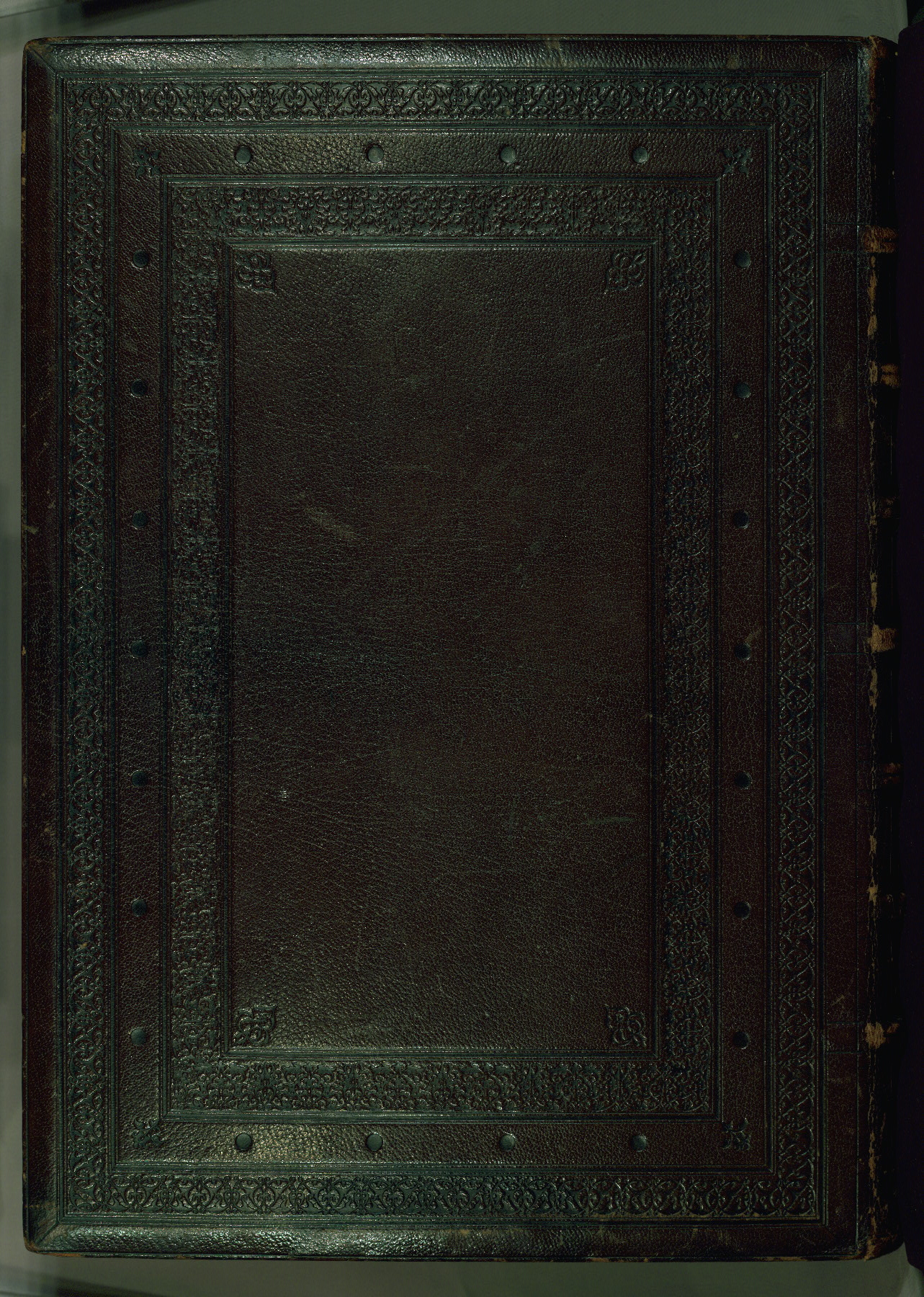Gratian's Decretum
(Medieval Europe , Manuscripts and Rare Books)
This deluxe version of Gratian's Decretum was created ca. 1280-90, most likely in Hainaut. The lively decoration of the manuscript indicates a marked taste for narrative, and there are thirty-seven historiated initials. The gloss work was completed by Bartholomew of Brescia. At first, Paris would seem to be the most likely place of origin, given that it was the leading center for the study of canon law. However, this particular manuscript exhibits scribal features that suggest its place of origin as being the Cistercian abbey of Cambron in Hainaut. Furthermore, Abbot Baudouin de Bousso, whose tenure at the abbey was from 1283 to 1293, was schooled in theology at the University of Paris, and he would eventually endorse the production of many fine manuscripts while at Cambron. In fact, the catalyst for this endeavor seems to have been the Beaupré Antiphonary (W.759-761), which was was created at Cambron during the 1280s.
Stylistic features of W.133 seem to have connections with the Beaupré Antiphonary. For example, Cistercian monks are shown in three extant illuminations throughout three of the antiphonary volumes; these monks are pictured in brown habits similar to the type worn by clerics in W.133. The reliance upon Cistercian precedents for textual and design features associates W.133 with the Cistercian abbey at Cambron. However, more remains to be confirmed by further inspection of the output of the scriptorium at Cambron.
Provenance
Provenance (from the French provenir, 'to come from/forth') is the chronology of the ownership, custody, or location of a historical object. Learn more about provenance at the Walters.
Possibly owned by Pedro Álvarez de Osorio, Marqués de Astorga [d. 1589]. Possibly owned by José María Osorio de Moscoso y Carvajal-Vargas, Marqués de Astorga, mid 19th century; Sale, Paris, May 7 1870, lot 14. Ambroise Firmin-Didot, Paris, 1870s; Sale, Paris, May 29 1879, part 2 lot 38. "F. Liechtenstein Bibliothek" [1]. Acquired by William Morris, England, 1896 [2]; Sale, London, 1898, lot 558; purchased by Quaritch, London, 1898. Acquired by Laurence W. Hodson, Wolverhampton, England [3]; Sotheby's Sale, London, December 4 1906; purchased by Quaritch, London, 1906. Purchased by Henry Walters, Baltimore, early 20th century; by bequest to Walters Art Museum, 1931.
[1] Ex libris stamp at bottom of fol. 1r
[2] Bookplate at top of front pastedown, inscription at top of first flyleaf "William Morris, June 26th 1896, Folkestone
[3] Bookplate at bottom of front pastedown
Exhibitions
| 2006 | The Art of Law: Legal Documents from the Collection of The Walters. The Walters Art Museum, Baltimore. |
| 1995 | The Book within the Book: Images of Books and Readers in Manuscripts. The Walters Art Gallery, Baltimore. |
| 1988 | Heavenly Bodies. The Walters Art Gallery, Baltimore. |
| 1986 | The Naked and the Nude. The Walters Art Gallery, Baltimore. |
| 1984-1985 | Illuminated Manuscripts: Masterpieces in Miniature. The Walters Art Gallery, Baltimore. |
| 1977-1978 | Splendor in Books. Grolier Club, New York; The Walters Art Gallery, Baltimore. |
| 1965 | Medieval Art. Philbrook Museum of Art, Tulsa. |
Conservation
| Date | Description | Narrative |
|---|---|---|
| 5/30/2014 | Treatment | binding stabilized; examined for digitization; media consolidation; splits mended |
Geographies
Hainaut
(Place of Origin)
United Kingdom (Place of Binding)
Measurements
Folio H: 16 9/16 × W: 10 13/16 in. (42 × 27.5 cm)
Credit Line
Acquired by Henry Walters
Location in Museum
Not on view
Accession Number
In libraries, galleries, museums, and archives, an accession number is a unique identifier assigned to each object in the collection.
In libraries, galleries, museums, and archives, an accession number is a unique identifier assigned to each object in the collection.
W.133












